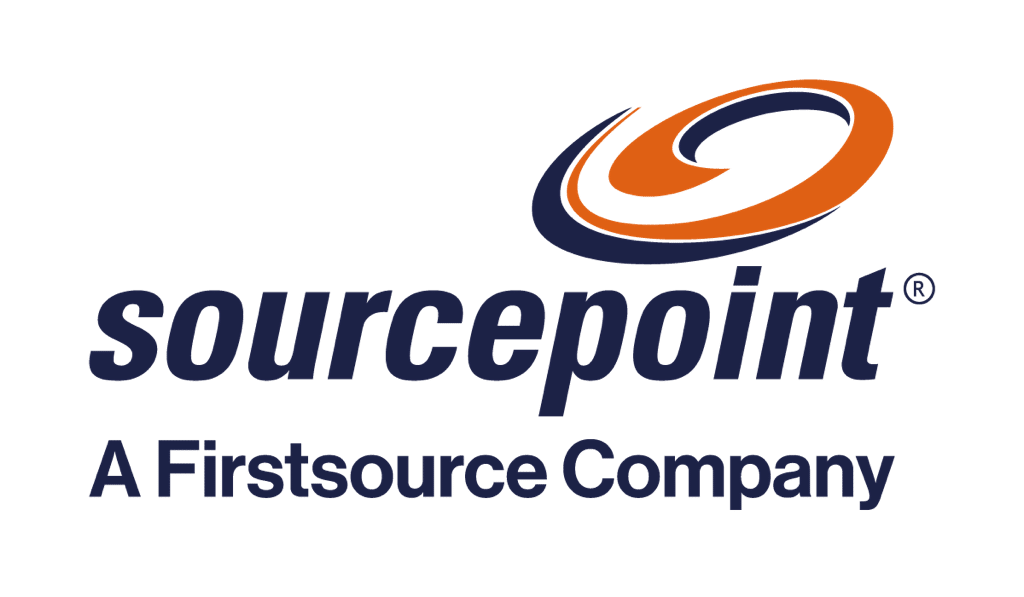All industries and businesses follow different playbooks. In football, for example, a playbook contains a formula for winning games. For each play, players practice the playbook by lining up in their correct positions and run plays, with their role for each play sometimes dependent upon the defense’s set up. Through practice and repetition, the team learns to master the entire playbook.
In the end, however, a football playbook requires execution with accuracy and efficiency only on gameday.
In business, every day is gameday. And while human errors in football—missed routes, interceptions, fumbles, penalties—can keep a team from winning, human errors in business can become much more costly.
For this reason, banks and non-bank lenders developing a mortgage servicing business today require highly sophisticated playbooks to successfully navigate the complex risk environment associated with mortgage servicing and achieve substantial rewards.
“The Greenfield Playbook” has proven to be one of the most effective strategies—plus it includes a silver lining that no servicing business should ignore.
The Playbook’s Importance
Business playbooks guide organizations. They bring together parts and pieces of a company to create workflows, processes, standard operating procedures, and a culture for success. Before building a playbook, however, companies need to analyze the risk/reward scenario for starting a mortgage servicing business and maintaining it for long-term success.
It is an imperative for successful servicing businesses to be adaptable, quick, and skilled at reacting to and implementing a plan of action to handle unexpected changes. Fluctuating interest rates, inflation, unemployment, pandemics, and new compliance rules are just some of the things that drive a constantly changing landscape for servicers.
Calling the compliance landscape for servicing complex is a huge understatement. Fannie Mae, Freddie Mac, and Ginnie Mae together provide thousands of pages of guidance on servicer responsibilities and update their guidance many times a year. Meanwhile, federal, state, and municipal regulations and statutes bring additional complexity to the mortgage servicing mosaic.
Any meaningful servicing failure is typically accompanied by outsized financial and reputational harm. These repercussions can impair your profitability, customer retention, and cross-selling capabilities as well. This means your playbook simply must be comprehensive and focused on ensuring your mortgage servicing platform is compliant and agile.
There are market risks as well. Mortgage rates and home prices are currently moving higher. Meanwhile, a once hot refi market has rapidly cooled down, and profit margins are compressing. At the same time, today’s borrower is accustomed to transparency and is searching for the best deals at the lowest prices. All these elements can significantly impair a company’s brand – and especially customer loyalty – without fast, effective change management.
The True Value Behind Servicing
Throughout the financial services industry, customer relationships and retention are appreciating in value. However, the most captive audience are borrowers with a mortgage. Unlike credit cards and auto loans, mortgages tie a customer to a particular financial institution for four to five years, if not longer.
With a captive audience comes the capability to cross-sell other products and services, including credit cards, auto loans, HELOCs, future mortgages, and really anything your company offers. Deepening your relationship with customers works well on many levels … it creates better brand loyalty with customers, lowers marketing costs, and, of course, increases revenue.
Mortgage servicers are uniquely suited to support cross-selling, too. We have more customer touchpoints than virtually any other financial service or product, and we generally have very long relationships with customers.
When attributing the value of cross-selling, servicers become a complex revenue generator and an extremely valuable operating platform. Additionally, the cost to originate a new mortgage with an existing customer pales in comparison to the cost of sourcing a new mortgage customer. This interesting fact allows us to look at the calculus of servicing profitability in a whole new light. We now need to consider the benefits of lowered marketing costs as a servicer attribution, which is where the Greenfield Playbook becomes so valuable.
Opening the Playbook
It requires a detailed strategy and a high level of expertise to create a lean servicing organization while protecting assets, increasing value, and reducing compliance risks. It is equally important to develop a friendly omni-channel experience for your mortgage customers that allows them to interact with you at their convenience and via their preferred methods.
This is why the Greenfield Playbook works so well. A Greenfield Playbook is a guideline to build a mortgage servicer that is most cost-effective through digital technology. Its counterpart, the Brownfield Playbook, takes an opposite approach. Under the Brownfield Playbook, servicers outline problem spaces to develop and deploy new software systems with existing legacy software applications or systems.
Building a mortgage servicing operation from the ground up using proprietary technology and software is an extremely complex endeavor. Truthfully, the typical servicing technology platform is an amalgamation of third-party systems and truly proprietary software. Most often, it is a company’s capability to recognize what and where to invest in proprietary development versus investing in highly configurable off-the-shelf systems that makes all the difference.
Before using the Greenfield Playbook, a company should have a clear strategic vision of what activities they view as core to their culture and business objectives. They must also determine whether investing capital to develop proprietary tools regarding these activities is the best way to achieve their objectives. It is equally important to recognize activities that are necessary to perform as a servicer, but do not meet the standard of a core business value or objective.
For example, one company may view marketing to customers as a core strength and a significant differentiator in their ability to deliver results. This company could then determine that all customer-related documents (i.e., billing statements) are a key platform they want to build, innovate, and maintain. Conversely, another company may view customer-related documents as a commodity and determine to use a third-party provider.
One of the first key steps in the development of a Greenfield Playbook is to map these types of decisions into your technology buildout. Not only will this exercise serve you well during the buildout phase, but it will also serve as a guidepost for future proprietary technology investments. In addition, it can help define your third-party solutions landscape – which, in turn, will lead you to develop meaningful business partnerships.
There’s also a value-add in bridging marketing and cross-selling conversations and blending them together to create the optimum consumer experience. Using communication touchpoints through digital technologies—websites, emails, phones, text messages, and chat—can provide great opportunities for servicers to enhance their interactions with customers. Servicers also need people who can service mortgage customers, offer new mortgage products as well as other services and products, and do it smoothly and cost- effectively.
However, such an omnichannel approach also increases the technology complexity for servicers. Companies that are just beginning to build a servicing business will likely find it easier to design such solutions from scratch than if they’d been operating as a servicer for years. Meanwhile, existing servicers migrating to this new state must rewrite their policies and procedures, re-code systems, rebuild workflows, and perhaps hire different skill sets. It is a significant change that can challenge an organization’s effectiveness at change management while still delivering on the value proposition, particularly at a comparable cost.
Here’s the Silver Lining
Hiring the right leadership team to build a servicing operation is its own work and demands much more than mortgage experience alone. It requires project managers, technical writers for policies and procedures, and workflow specialists to document all the processes, job aids, desktop reference guides, training materials, job descriptions, and the job duties and responsibilities for every job for hundreds of employees. All of this must be done quickly, correctly, and at the lowest cost possible.
The potential problems quickly become evident. How should the bandwidth of the leadership team be managed? Are those on the leadership team also great project managers, technical writers, workflow documenters, etc.? Even if they are, is having the leadership team do these things really their highest and best use? Often, the wise course of action is to have a group of people to support the leadership team, manage projects, and translate their expert knowledge into usable, trainable processes.
You might well determine that these types of resources are only necessary for the build-out phase of the operation and involve no meaningful, long-term work with a servicing platform. Either way, as a business, you must decide whether to hire these resources directly or go into the marketplace and find providers who can supplement your leadership team for the build-out phase.
The silver lining behind the Greenfield Playbook is that it creates a symphony of different parts and pieces that flow together to form a unique composition within a digital mortgage servicing operation. It also opens up outside resources, such as outsourced staff, to ensure a servicer has the right staff with specific job duties and responsibilities in place. Ideally, the playbook will include partnering with a company that has an excellent global recruiting engine for the U.S. mortgage market that allows them to do complicated implementations for clients across the globe, quickly and cost-effectively.
Risk, Rewards, and ROI
Mortgage executives who have traditionally originated loans may not have liked the risk profile of a mortgage servicing operation. It’s complicated, it’s risky, and the money generated by servicing loans is interesting but not overwhelmingly compelling on the face of it.
Of course, if you are not sure you want to be a mortgage servicer, there are many companies that will service your loans for you. However, if you are certain that you want to cultivate your brand with your mortgage customers, then you must take care to understand how a third-party servicer will best allow you to achieve your brand loyalty and customer loyalty objectives as well as your cross-sell and new mortgage origination goals.
Owning a customer for the entire lifecycle of their mortgage—whether it’s five years or more—gives companies control over their vision of branding, customer loyalty and marketing as well as deepens relationships, all of which results in a more diversified income strategy at higher margins. When you add in the significantly lower cost of origination for an existing customer and the benefits to sell existing customers on other products and services, companies are now seeing a much more compelling case to build a servicing business with the Greenfield Playbook.
Originally published in DS News.




